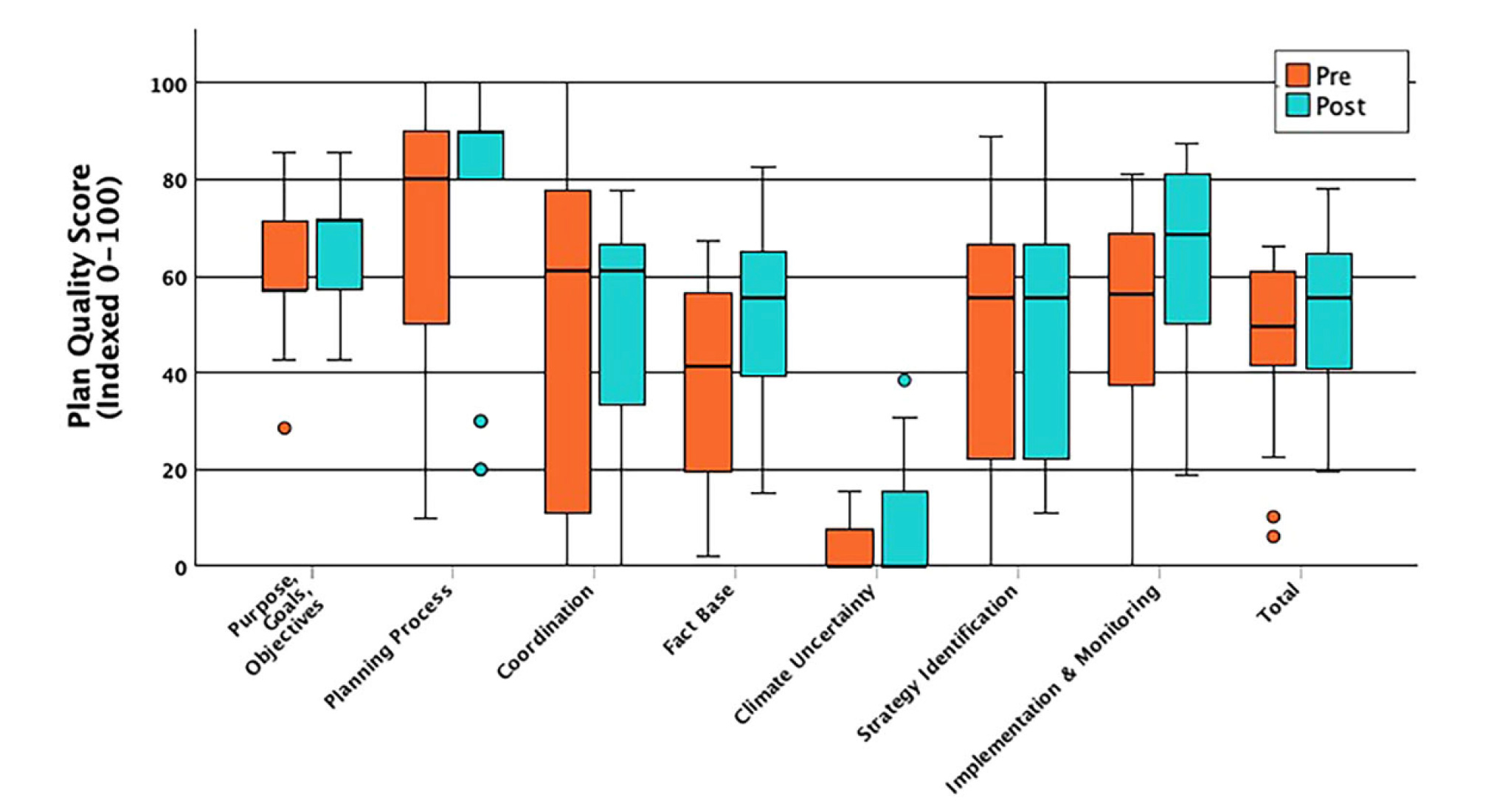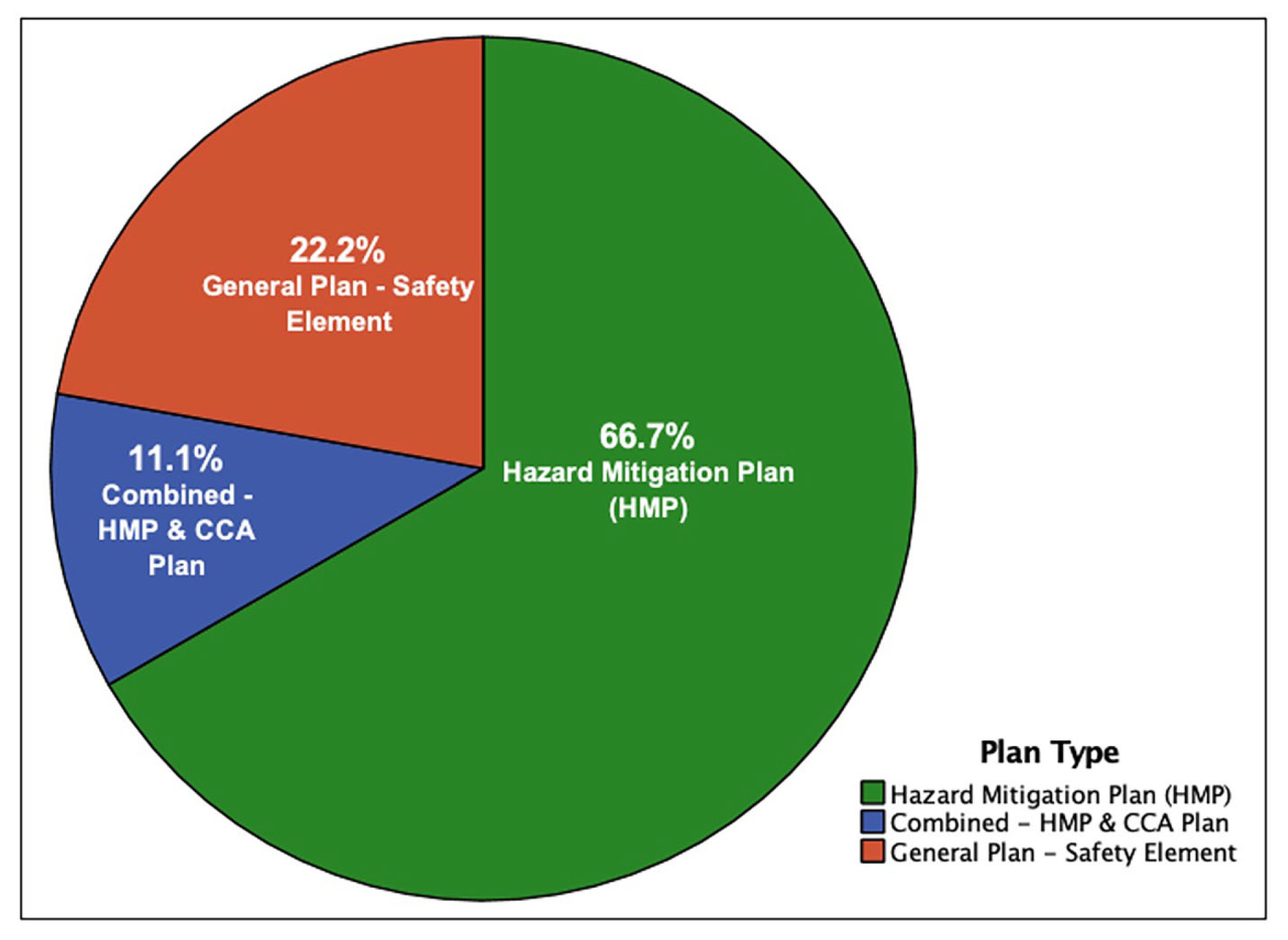Uncovering JAPA
State-Mandated Climate Planning

Local governments must proactively plan for the anticipated uncertainties of climate change and its impacts on communities. Many wonder whether mandating climate change adaptation and resiliency plans would improve community responses to various climate-related disasters. California was the first U.S. state to broadly mandate climate adaptation and resilience planning at the local level.
In "Improving the Quality of Climate Change Adaptation Planning Through State Mandate: The Case of California"(Journal of the American Planning Association, Vol. 91, No. 2), Philip G. Gilbertson and Sara Meerow examine how local governments have implemented California's Senate Bill 379 and its influence on climate change adaptation planning in seventeen communities.
Assessing State-Mandated Climate Planning
In 2015, the State of California passed Senate Bill 379, requiring local plans to include climate change adaptation and resilience strategies. Notably, the bill is an unfunded mandate. Local jurisdictions are largely responsible for funding planning activities and implementing projects.
The mandate allows for flexible implementation at the local level and encourages jurisdictions to leverage their existing network of local plans to satisfy multiple requirements. It explicitly requires local jurisdictions to include a climate change vulnerability assessment; adaptation or resilience goals; and objectives, policies, and strategies to implement those policies.
There are no specified punitive actions for communities that fail to comply. The bill presents a unique opportunity to assess policy effectiveness at a time when communities worldwide must intensify their climate adaptation planning.
Under Senate Bill 379, most jurisdictions chose to use their local hazard mitigation plans to meet the requirements. The authors' evaluation showed that, while there was a statistically significant improvement, overall plan quality remained low to moderate in most areas. Improvements were noted in both implementation and monitoring.

Plan Quality Category: Pre- vs. post-SB379 plan quality index scores.
At the same time, there was a puzzling decline in coordination and engagement, including reduced involvement from local elected officials, federal agencies, and institutions of higher learning. These groups are essential for successful climate adaptation efforts. It remains unclear why fewer appeared engaged in post-mandate plans. Local planners may have been uncertain about how to leverage these alternative approaches, or they may simply lack the capacity for implementation. The authors call for both research and practice to address this gap.
The Strength of Flexible Mandates
The design of California's Senate Bill 379, which grants flexibility to local jurisdictions while lacking a punitive compliance mechanism, suggests that cooperative mandates can be effective under the right circumstances.
A key takeaway for practitioners is to recognize the flexibility inherent in a cooperative mandate and use it to their advantage. This approach could reduce duplication of effort and allow for more efficient use of limited resources.

Plan types used to meet SB379 requirements.
Future planning mandates, and the planners who implement them, should account for the inherent uncertainty of climate change. Planners should incorporate more detailed information on climate risks and adopt diverse strategies to address a range of possible future climate scenarios.
The authors encourage these alternative planning approaches and the integration of new requirements into existing community plans. The goal is to reduce the burden on limited local planning capacities while still enabling comprehensive preparation for uncertain futures.
KEY TAKEAWAYS
- Policymakers should consider flexible mandates to leverage existing resources.
- Future planning mandates should account for the inherent uncertainty of climate change.
- Planners should incorporate detailed information on climate risks and diverse strategies into future climate change adaptation and resiliency plans.
Top image: Photo by iStock/Getty Images Plus/ Toa55
ABOUT THE AUTHOR


